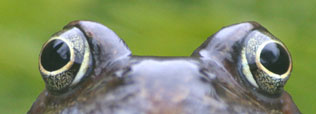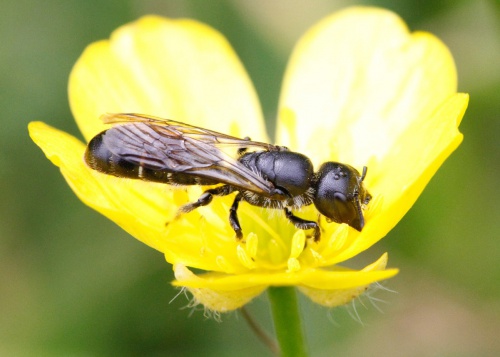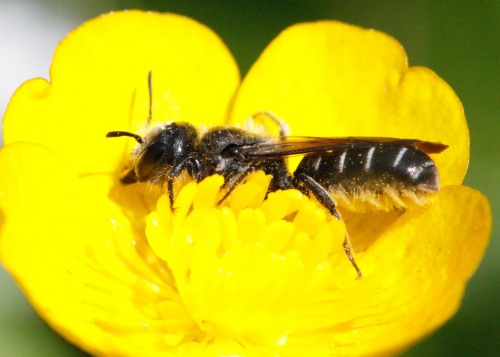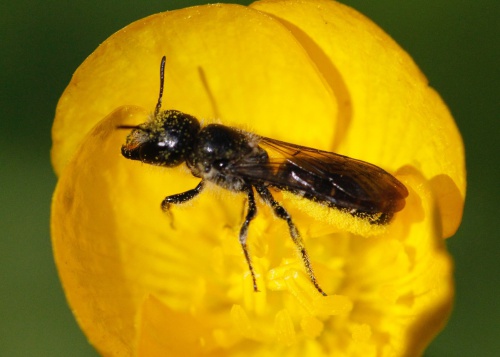Sleepy Carpenter Bee - Chelostoma florisomne
A larger version of the more frequently encountered C. campanularum; of the same general long, thin cylindrical shape, but with distinctive white bands of short hairs on the apices of the abdominal segments. The males also have a two-pronged peg on the final segment of the abdomen and this may be used in the same way as that on the males of C. campanularum but that remains uncertain.
Most solitary bees and wasps are difficult to identify, and can rarely be identified from photos taken in the field. All red-rated records should include a photo or set of photos of the specimen, illustrating the key characters taken from a standard key, which should also be referenced (e.g. ‘Falk, 2015’). The full set of key characters are generally not visible in field photos and photos are rarely sharp enough. To aid in the verification of your records, please include face shot, side, top and wings. The notes should state whether male or female, and explain how the specimen met the key characters. Although NS may not be able to identify the species even if these reference photos are provided, the photos will be stored with the record and may allow it be identified in future. Alternatively, NS will accept records identified by a recognised local or national expert, or that have been identified via BWARS’ Facebook https://www.facebook.com/profile.php?id=100065021433202 . If you have obtained this advice, please note the name of the person/organisation identifying the record in the ‘determiner’ field (e.g. ‘Stuart Roberts, BWARS Facebook’) rather than just a comment of ‘BWARS Facebook’.
Unless identified by a recognised expert, a photo is required and the specimen should be examined with a microscope. In the comments box, state the key or ID method used and describe the size and identifying characters.
Most often associated with the interface between woodland and meadow where buttercups are present. It is not regularly found in gardens.
Univoltine; May to July.
Oligolectic on Ranunculaceae. It is notable as one of the few bees ever to be found in the flowers of this plant family.
Found throughout England and Wales but uncommon elsewhere in Britain.
Status in Leicestershire and Rutland not known.
Leicestershire & Rutland Map
Enter a town or village to see local records
MAP KEY:
Yellow squares = NBN records (all known data)
Coloured circles = NatureSpot records: 2020+ | 2015-2019 | pre-2015
UK Map
Species profile
- Common names
- Sleepy Carpenter Bee, Large Scissor Bee (Sleepy Carpenter Bee)
- Species group:
- Bees, Wasps, Ants
- Kingdom:
- Animalia
- Order:
- Hymenoptera
- Family:
- Megachilidae
- Records on NatureSpot:
- 4
- First record:
- 16/06/2019 (Berriman, Matthew)
- Last record:
- 14/07/2019 (Berriman, Matthew)
Total records by month
% of records within its species group
10km squares with records
The latest images and records displayed below include those awaiting verification checks so we cannot guarantee that every identification is correct. Once accepted, the record displays a green tick.
In the Latest Records section, click on the header to sort A-Z, and again to sort Z-A. Use the header boxes to filter the list.







